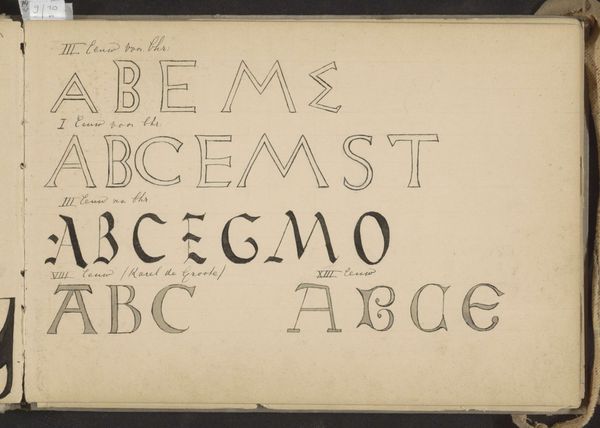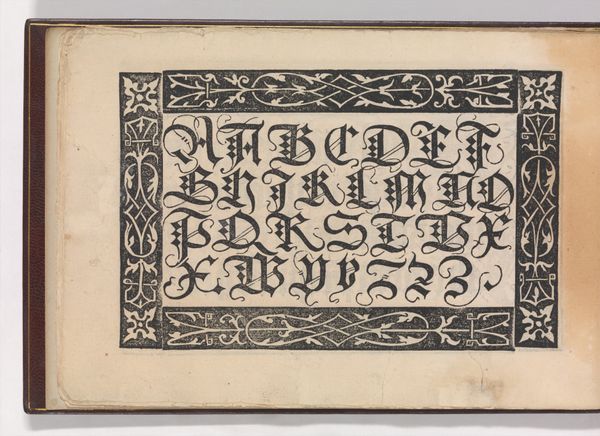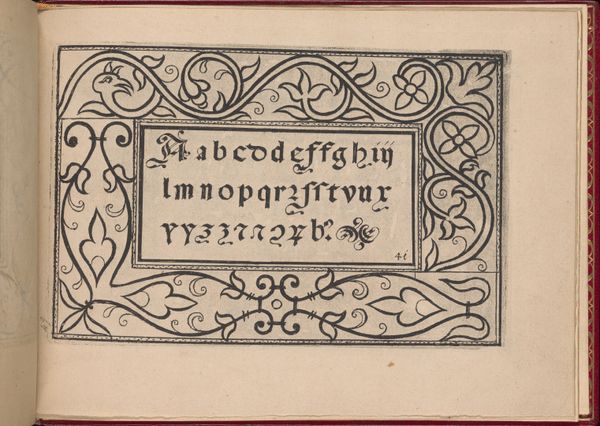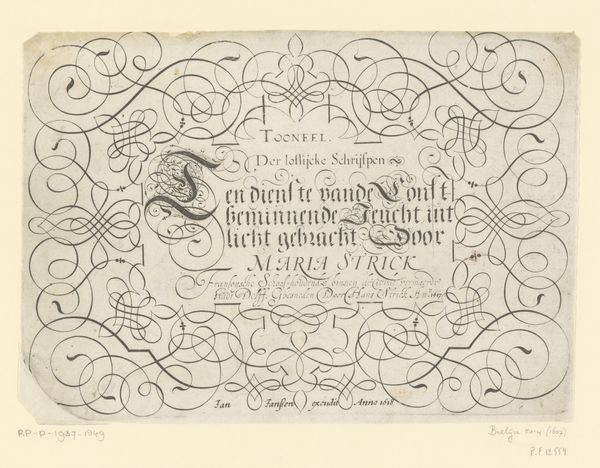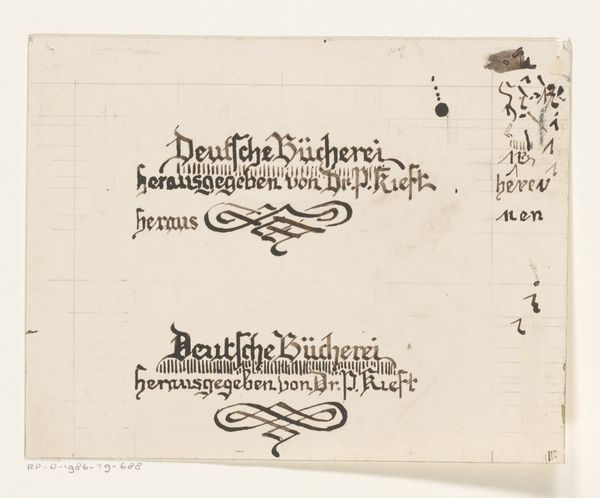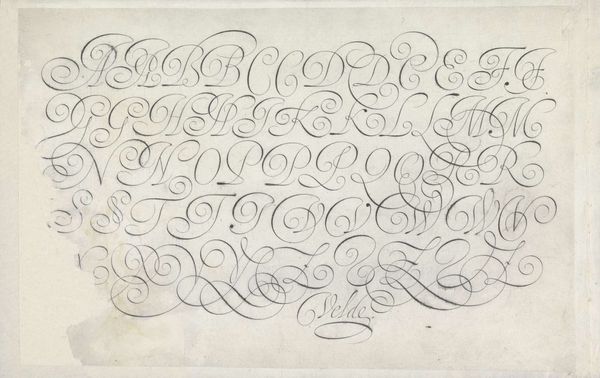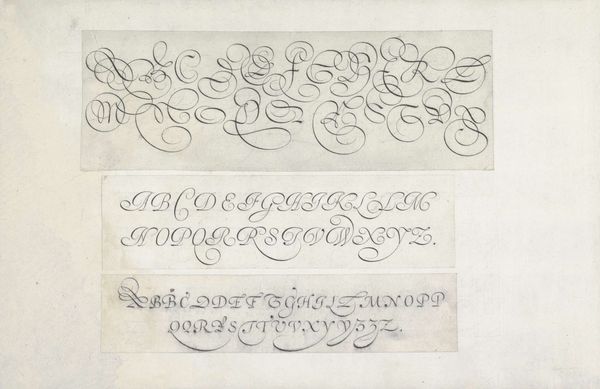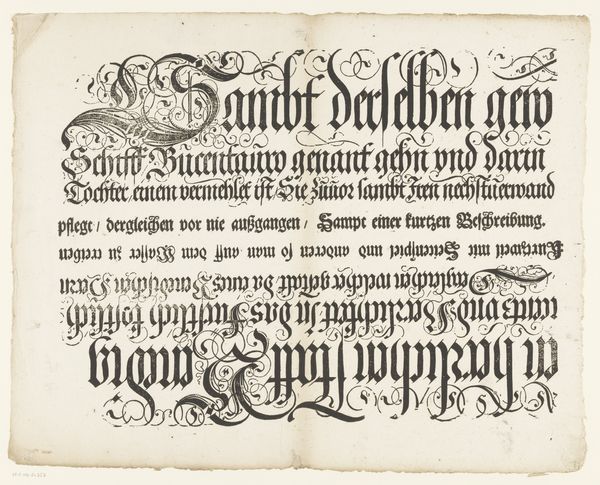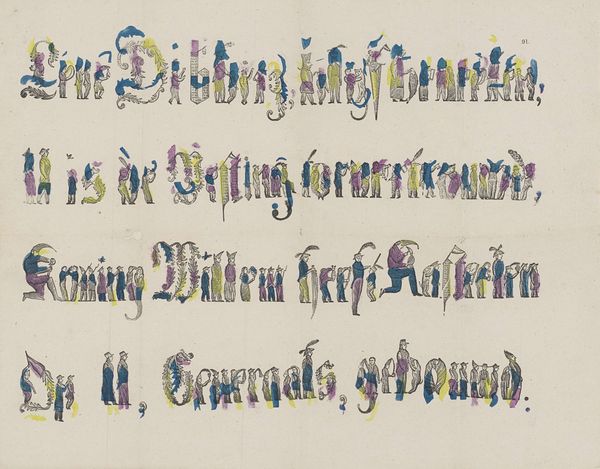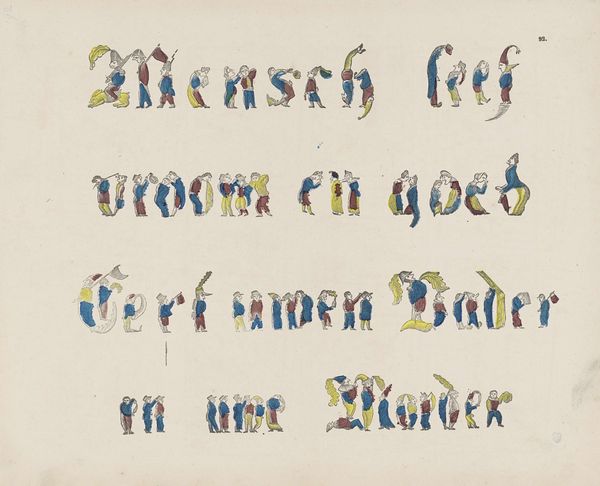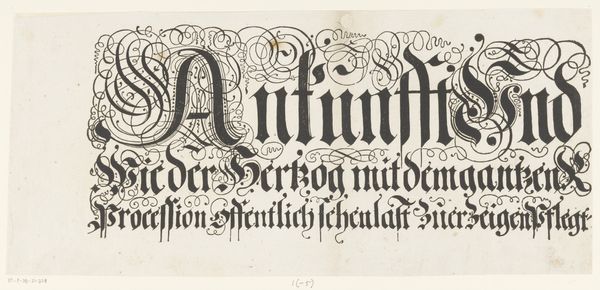
Kalligrafie: lettertypen uit de twaalfde tot en met de achttiende eeuw c. 1890 - 1922
0:00
0:00
drawing, graphic-art, typography, ink, pen
#
drawing
#
graphic-art
#
typography
#
typography
#
ink
#
pen
#
decorative-art
#
calligraphy
Copyright: Rijks Museum: Open Domain
Editor: Here we have “Kalligrafie: lettertypen uit de twaalfde tot en met de achttiende eeuw,” calligraphy, letter types from the twelfth to eighteenth centuries, attributed to Johanna van de Kamer, likely created between 1890 and 1922 using pen and ink. The array of lettering styles is mesmerizing, like a historical survey compressed onto a single page. What can you tell me about this from a formalist perspective? Curator: The most striking feature is, of course, the contrasting styles. Note the variation in line weight, from the delicate hairlines of the "XVIII eeuw" examples to the bold, angular strokes of the "XV eeuw" lettering. These variations are not merely decorative; they fundamentally alter the perceived texture and rhythm of the composition. Consider, for instance, how the negative space operates differently in each style, affecting readability and visual impact. Which group, to you, seems most successful formally, and why? Editor: I'm drawn to the "XVI eeuw" lettering. There's a satisfying balance between the sharp edges and the flowing curves. The uniformity gives them rhythm, though not very lively or personal, maybe more technical? Curator: Precisely! Its controlled, almost mechanical execution speaks to a particular aesthetic ideal – prioritizing clarity and precision. The question of expressiveness versus pure functionality becomes quite compelling when examining these letterforms devoid of context. Do you agree that the visual structure predetermines our aesthetic reception, despite a lack of narrative context here? Editor: Absolutely! The structure creates an impression without a story, making us think of control and clarity. It makes me reconsider my interpretation as beautiful simply due to visual components! Thanks! Curator: Indeed, a vital reminder of how much aesthetic meaning resides within formal arrangement and treatment.
Comments
No comments
Be the first to comment and join the conversation on the ultimate creative platform.
